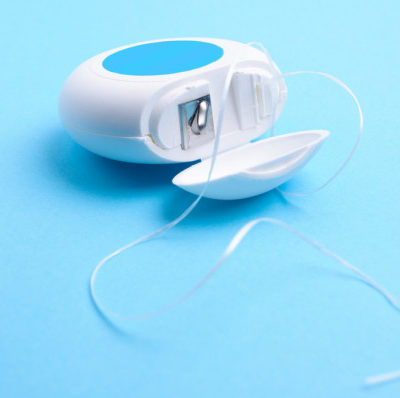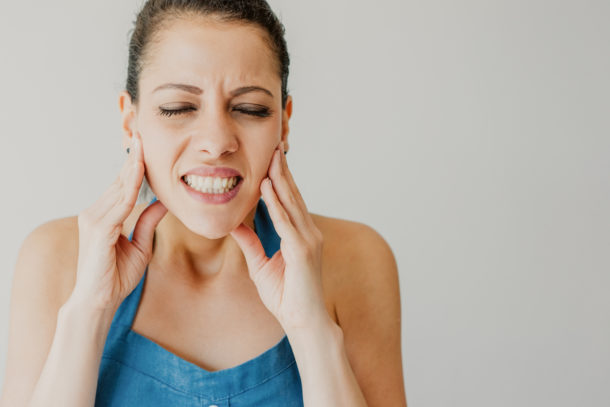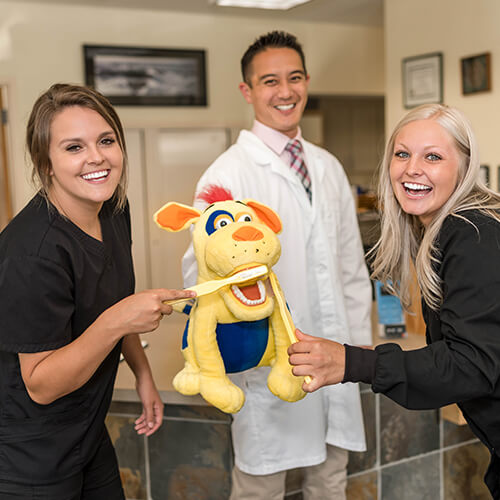


Oh Floss How I Hate You So!!! Flossing is probably not on anyone’s top 10 list of “Favorite Things to Do” and we get that. So why does your hygienist and dentist keep telling you that you need to do it?
Today we will go over four common questions that patients have in the hopes that you can overcome your ‘flossing blues.’
Great question! There is a mistaken belief that your toothbrush cleans all of surfaces of your teeth.
While the toothbrush does a great job cleaning the top and sides of your teeth, it cannot get in between the teeth.
In between the teeth is where a majority of people get their cavities. Dental floss will remove any plaque and debris that builds up between our teeth reducing the chances of getting a cavity.

Flossing also helps to remove any plaque and debris in the gum tissue area helping remove bacteria that cause both gingivitis (gum irritation) and periodontal disease (gum infection combined with bone loss).
Teeth should be flossed at least once a day. The preferred time is at night to eliminate all the buildup of plaque and food debris from the day.
If you know that you will not build this into your nightly routine, any time of the day will do. We are more concerned that you are flossing on a daily basis than what time of day you are flossing at.

The Academy of General Dentistry’s Fact sheet titled “Floss to Prevent Gum Disease” list two basic methods of flossing:
– Spool Method: You take an 18-inch piece of floss and wrap the bulk of it lightly around your middle or index finger.
Wind the rest of the floss around your middle finger on your opposite hand, and use this finger to take up the floss as it becomes soiled or frayed.
– Loop Method: Take an 18-inch piece of floss and tie it in a circle. Hold the loop with your fingers inside to guide the floss through the lower teeth and your thumbs to guide it through the upper teeth.
This method works well for those with limited dexterity.

Remember to floss in an up and down motion, forming a “C” around each tooth and getting below the gumline. If both of these methods are still hard for you, there are floss holders that make flossing very easy.
These are especially great for kids and the elderly. Like the other flossing methods, you will need to floss up and down, forming a “C” around each tooth.
While the Waterpik and other water flossing methods do improve oral health, they are not a substitute for string flossing between the teeth. Devices like the Waterpik are great adjuncts for at home hygiene, but they cannot disrupt the plaque in between the teeth the same way that flossing can.
While flossing can be a pain at times, the benefits of flossing on a daily basis are tremendous. With a little work and persistence you too will be in a “flossing groove” in no time!


Eleven Eleven Dental
Monday: 8:00 am – 5:00 pm
Tuesday: 8:00 am – 5:00 pm
Wednesday: 8:00 am – 5:00 pm
Thursday: 8:00 am – 5:00 pm
Friday: CLOSED
Closed: 1pm – 2pm Daily
Monday: 8:00 am – 5:00 pm
Tuesday: 8:00 am – 5:00 pm
Wednesday: 8:00 am – 5:00 pm
Thursday: 8:00 am – 5:00 pm
Friday: CLOSED
Closed: 1pm – 2pm Daily